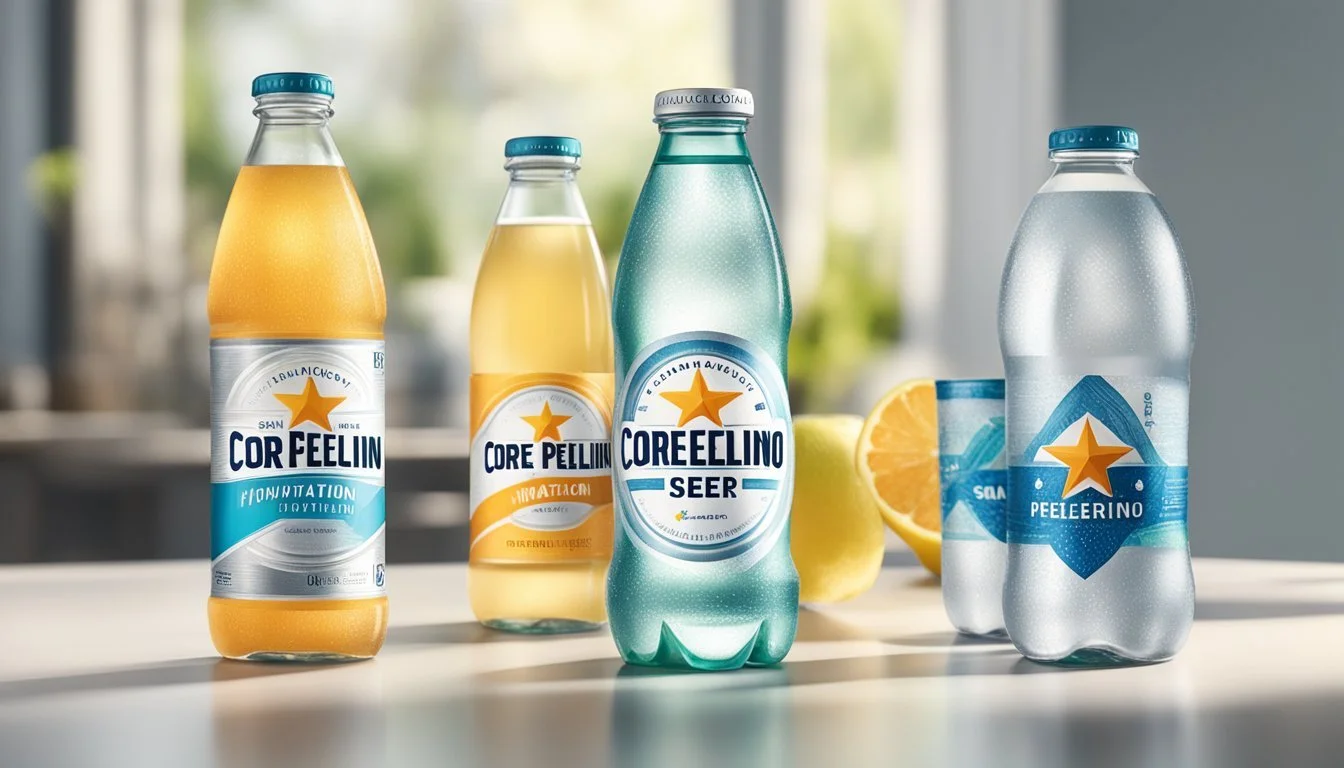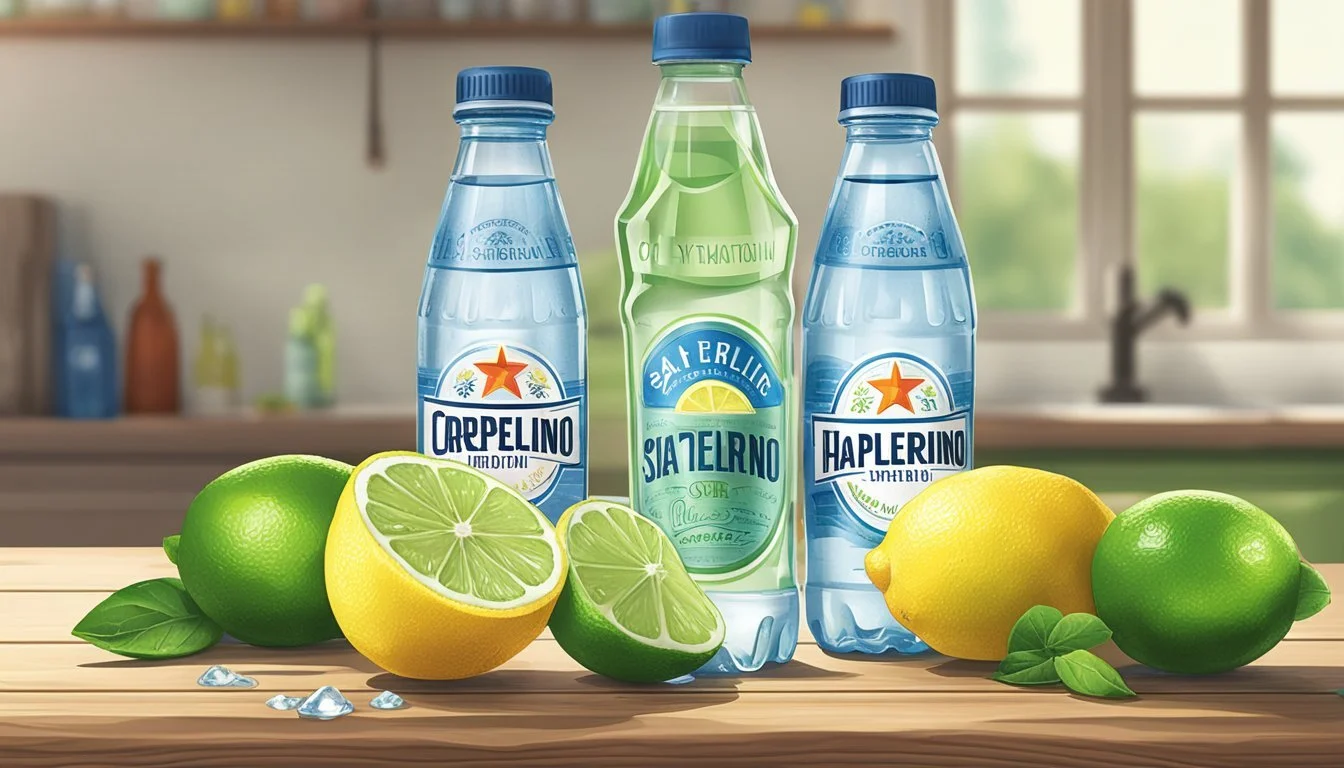Core Hydration vs. San Pellegrino
The Bottled Water Showdown
When selecting bottled water, consumers are faced with a myriad of choices, each promising unique benefits. Core Hydration and San Pellegrino represent two distinct offerings within the bottled water market. Core Hydration is known for its purified water that boasts a pH of 7.4, designed to match the body's natural pH balance. It undergoes a seven-step purification process and is enhanced with minerals and electrolytes. This brand also offers a line of organic flavored beverages, catering to those seeking added antioxidants.
On the other side of the spectrum, San Pellegrino, an Italian brand with rich heritage, is synonymous with mineral-rich sparkling water. Unlike Core Hydration’s purified still water, San Pellegrino is naturally carbonated, sourced from springs in the Lombardy region. The presence of minerals like calcium, magnesium, and bicarbonate give San Pellegrino its distinctive taste and have made it a longstanding favorite in fine dining establishments.
The comparison between Core Hydration and San Pellegrino is not just about taste and composition—it's also about the experience each brand offers. Core Hydration aims to provide a product that supports the body's natural balance and hydration needs, while San Pellegrino focuses on the tradition of European sparkling mineral waters appreciated for their gastronomic appeal. Consumers must weigh these factors and their individual preferences when deciding which bottled water is better suited to their lifestyle.
Origin and Source
When comparing Core Hydration and San Pellegrino bottled water, the distinctiveness of each brand stems from their sources. Core Hydration utilizes a multi-step purification process, while San Pellegrino sources water from the Italian Alps.
San Pellegrino's Italian Alps Source
San Pellegrino water is sourced from the foothills of the Italian Alps, near Bergamo. It emerges from a natural spring that has been renowned for centuries. The location provides the water with a unique blend of minerals, which not only contribute to its taste but also to the brand’s reputation as a premium water brand.
Core Hydration's Purified Water Process
Core Hydration water undergoes a seven-stage purification process that includes reverse osmosis, micron and carbon filtration, ozonation, and ultraviolet exposure. This sophisticated procedure results in water that is free from impurities and contaminants. Despite the lack of a natural spring source, Core emphasizes maintaining an optimal pH level to match the human body’s natural pH.
Mineral Content Analysis
When comparing Core Hydration and San Pellegrino, mineral content is a critical aspect that influences both taste and health benefits. Each brand's unique source and processing methods contribute to their distinctive mineral profiles.
Mineral Water Benefits
Mineral water, such as San Pellegrino, typically contains minerals like calcium, magnesium, sodium, and potassium. These elements are essential for bodily functions and can provide various health benefits. For instance, calcium is vital for bone health, while magnesium plays a crucial role in regulating muscle and nerve function. Potassium aids in cellular function and fluid balance, and sodium is pivotal for blood pressure regulation.
Calcium: Essential for bones and teeth.
Magnesium: Supports muscle and nerve function.
Potassium: Crucial for heart and cellular functions.
Sodium: Regulates fluids and blood pressure.
Electrolyte Enhancement in Core Hydration
Core Hydration offers electrolyte-enhanced water, which is designed to promote hydration by replenishing electrolytes lost through sweat. Unlike San Pellegrino, which relies on its natural source for mineral content, Core Hydration adds a blend of electrolytes, including calcium chloride, magnesium chloride, and potassium bicarbonate for taste and hydration benefits. The presence of these electrolytes makes Core Hydration an attractive option for those engaged in physical activities or looking to balance their electrolyte levels.
Carbonation and Mouthfeel
This section evaluates the distinguishing characteristics of San Pellegrino's carbonation and how it contrasts with the stillness of Core Hydration, focusing primarily on the aspect of mouthfeel.
San Pellegrino's Signature Bubbles
San Pellegrino is renowned for its fine carbonation, which imparts a pleasant effervescence that is a hallmark of its identity as a sparkling mineral water. The bubbles in San Pellegrino are consistently sized, providing a unique texture that enhances the overall tasting experience. This carbonation not only contributes to the mouthfeel but also complements the mineral content inherent in the water, delivering a crisp and refreshing sensation.
Comparison with Still Core Hydration
Core Hydration, being a still water, offers a stark contrast to San Pellegrino's effervescent nature. Its lack of carbonation results in a smoother, softer mouthfeel that aims more for purity and balance in its presentation. The absence of bubbles means that the focus shifts from texture to the clean, unaltered taste of the water and its optimized pH level. Consumers who prefer a more serene water-drinking experience might find Core Hydration suitable for their palate.
Taste Profile and Palate
When discussing bottled water, the elements of taste profile and palate, including the nuances of mineral taste and pH balance, often take center stage. Each brand offers a unique experience for the consumer's taste buds.
San Pellegrino's Mineral Taste
San Pellegrino is recognized for its distinctive mineral taste, attributable to the natural springs from which it is sourced in the foothills of the Italian Alps. Consumers often report a crisp flavor that pairs well with food, and sommeliers may highlight San Pellegrino's ability to cleanse the palate between tastings of different wines. Its mineral content gives it a slight salinity and a pronounced taste profile that stands out in taste tests.
Profile Features:
Sourced from the Italian Alps
Naturally occurring minerals
Slight salinity
Crisp, noticeable taste
Core Hydration's Balanced pH
Core Hydration advertises a pH level of 7.4, which is very close to the human body's natural pH. This ensures a balanced taste without strong acidity or alkalinity. The water goes through a 7-step purification process, after which minerals and electrolytes are added to match the natural levels in the human body. Consumers might find Core Hydration's taste to be neutral or even slightly sweet, distinguishing it from the more robust mineral taste of San Pellegrino.
Profile Features:
pH level of 7.4
Purified with minerals and electrolytes
Neutral to slightly sweet taste
Health Implications
When comparing Core Hydration and San Pellegrino, it is important to consider their impacts on health aspects such as hydration and nutrition, as well as potential risks they may pose.
Hydration and Nutrition
Core Hydration water touts a pH level of 7.4, which aligns closely with the human body's natural pH. This characteristic is intended to promote better hydration and prevent acidity. The electrolyte-enhanced formula is designed to replenish essential minerals lost during physical activity, which can aid in keeping the body's hydration levels balanced.
San Pellegrino, being a mineral water, naturally contains a variety of minerals such as calcium and magnesium. These electrolytes are essential for various bodily functions, including muscle contractions and nerve signaling. Regular consumption might support heart health and bone density, with studies suggesting an improvement in blood pressure for those with low magnesium levels after drinking mineral water.
Potential Health Risks
Both Core Hydration and San Pellegrino have their own set of considerations when it comes to health risks. Core Hydration water should ideally be consumed from BPA-free plastic bottles to minimize chemical leaching risks. Consumers should also be aware of the implications of overhydration or imbalanced electrolyte intake, which can occur with any electrolyte-enhanced beverage if consumed excessively.
San Pellegrino contains trace amounts of fluoride, a mineral known for its benefits in dental health. However, excessive fluoride intake can pose risks and should be monitored, particularly among young children. Additionally, as a carbonated beverage, San Pellegrino may affect digestion and lead to bloating or gas for some individuals.
In summary, consumers should weigh the hydration benefits of electrolyte-enhanced water against the natural mineral provision of mineral water, while considering their own health requirements and potential risks associated with each.
Environmental Considerations
When comparing bottled waters like Core Hydration and San Pellegrino, one must consider the environmental impact of their production and life cycle. This covers the materials and processes used in bottling as well as the sustainability of water sources.
Bottling Processes and Packaging
Core Hydration prides itself on using 100% recyclable plastic bottles that are free from BPA, a chemical compound often found in plastics. In contrast, San Pellegrino traditionally packages its water in glass bottles, which offer a significantly lower rate of decomposition in the environment compared to plastics. However, glass recycling is more energy-intensive, and because glass is heavier, it also requires more energy for transportation.
Plastic Waste is a major environmental issue, with the Environmental Protection Agency (EPA) emphasizing the importance of recycling to reduce the impact of plastics on landfills and ecosystems. Core's use of recyclable materials is a step in the right direction, though it still contributes to the demand for single-use plastics.
Water Footprint and Sustainability
The concept of the water footprint refers to the total volume of fresh water used to produce goods and services. Both Core Hydration and San Pellegrino must consider this in their operations. Core Hydration sources its water through a sustainable process that emphasizes the preservation of the water cycle and its natural pH. San Pellegrino, being sourced from natural springs, is inherently associated with minimal interference in the water's natural mineral composition.
Both companies have initiatives aimed at sustainability. Core engages in water restoration projects, and San Pellegrino has efforts to protect its source's natural environment. Both need to balance their extraction practices with the natural replenishment rates to ensure long-term viability of their water sources.
Regarding Boxed Water as an alternative, while not directly related to the brands in question, it highlights growing consumer interest in sustainable packaging options beyond plastic and glass. Brands are being prompted to investigate and potentially adopt more environmentally friendly packaging solutions due to pressure from environmentally conscious consumers and regulatory agencies like the EPA.
Market Presence and Brand Comparison
When comparing Core Hydration and San Pellegrino, consumers typically consider factors such as market presence and the distinct identities each brand projects. Core Hydration, known for its ultra-purified water, pitches balance and perfect pH, while San Pellegrino, an Italian brand, is synonymous with its sparkling mineral waters that grace dining tables worldwide.
Consumer Perception
Core Hydration is often perceived as a contemporary and health-focused choice, emphasizing the water's balanced pH and the inclusion of electrolytes for taste. On the other hand, San Pellegrino has sustained its image as a premium and classic bottled water brand, notable for its mineral content and association with gourmet dining experiences.
Brand Loyalty and Market Share
Core Hydration:
Market Presence: Emerging presence in a competitive market.
Brand Loyalty: Attracts health-conscious consumers who prefer balanced pH and added electrolytes.
San Pellegrino:
Market Presence: Strong with a commanding international presence and recognition.
Brand Loyalty: High among those who prioritize tradition and premium dining experiences.
Market Share: According to a Los Angeles Times article, it holds a significant share with its parent company, San Pellegrino, and is a leading name among sparkling water brands.
The bottled water market is fiercely competitive, but each brand carves its niche by catering to distinct consumer preferences. Water sommeliers even participate in this space, advising on the water best suited to complement dining experiences, which often benefits brands like San Pellegrino due to their heritage and standing in culinary circles.




